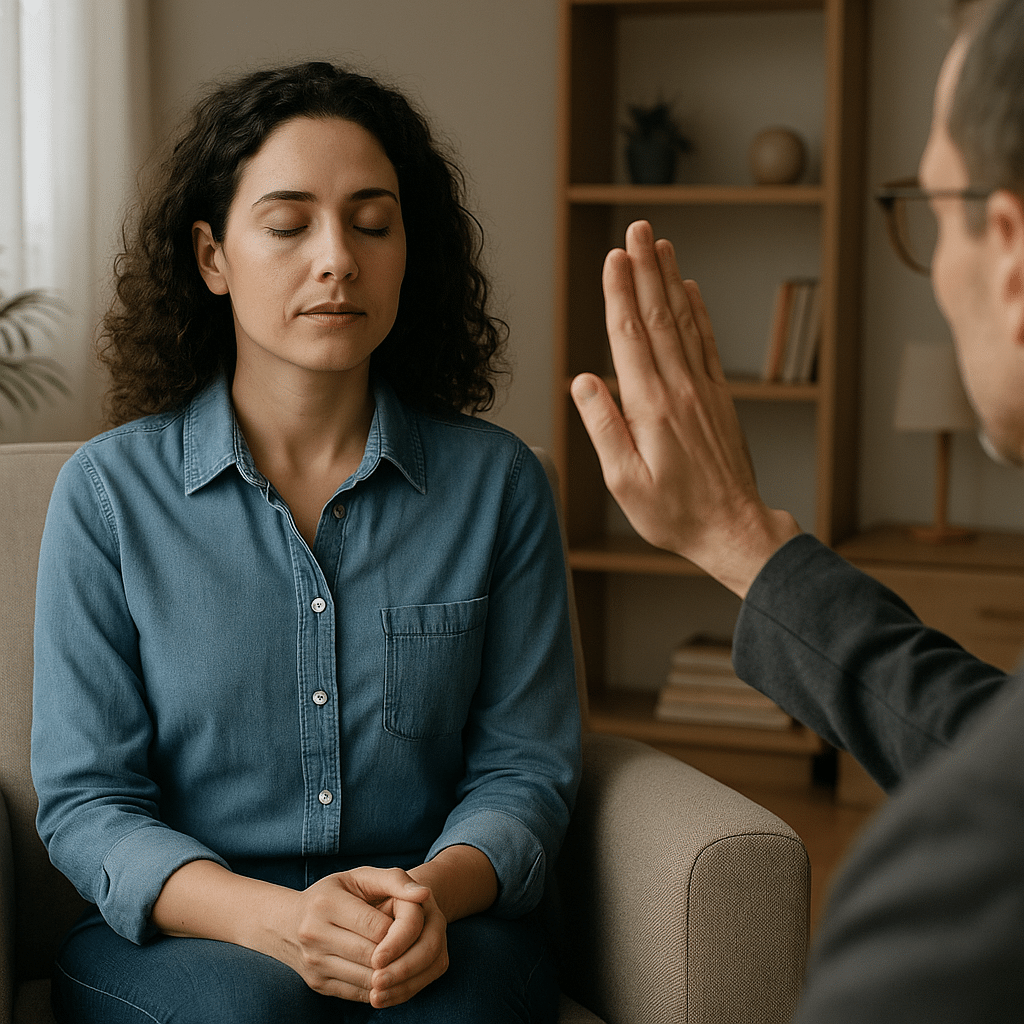It happens quietly for some. The days shorten, the air shifts, and suddenly everything feels harder. You lose momentum, your energy dips, even on days when nothing is technically wrong. For others, the shift is a wave of sadness tied to gray skies or colder mornings. Either way, it comes back year after year.
There’s a condition called seasonal affective disorder, often shortened to SAD, that shares many symptoms with major depression. But it follows a particular rhythm, one linked to changes in sunlight and brain chemistry.
In this guide, we’ll explore how winter depression differs from other types, how science explains the pattern, and why treatment starts with recognition.
Why Symptoms Feel So Similar
APA notes that 5% of U.S. adults experience SAD, with symptoms lasting about 40% of the year. Risk is higher at northern latitudes, in women, and in younger adults.
At first glance, there’s little that separates SAD from traditional depression. Both come with a sense of heaviness, emotional and physical. You might lose interest in things that used to matter. Your sleep shifts, food cravings appear, or you stop caring about meals altogether. Concentration slips, and you feel disconnected.
From a diagnostic standpoint, SAD disorder meets the same baseline as major depressive disorder. In fact, SAD is classified as a subtype of it. The difference isn’t in the emotions themselves. It’s when and how often they return.
That’s why people often don’t catch it. The overlap feels complete. But a key pattern sets it apart.
The Key Differentiator Is the Seasonal Pattern
This pattern, the way symptoms follow the calendar, is the heart of SAD disorder.
Most people with seasonal depression report that their low mood begins around late fall or early winter. It deepens over the darker months, then begins to lift as spring returns. The cycle repeats, sometimes like clockwork. To qualify for diagnosis, this must happen at least two years in a row, with more seasonal episodes than non-seasonal ones.
By contrast, major depression isn’t tied to seasonal change. It may appear after a stressful event, or it may arise for no visible reason. Once it begins, it doesn’t follow daylight. It lingers, sometimes for months, sometimes for longer.
Here’s one way to picture it: Seasonal depression is like a light-dependent mood shift, cyclical and environmental. Major depression tends to be more persistent, with its roots planted deeper and not tied to the weather outside.
Unique Markers of Seasonal Affective Disorder
There are other clues that set seasonal affective disorder apart, especially in how it shows up in the body.
While major depression often comes with insomnia or loss of appetite, SAD leans in the opposite direction. You might sleep for hours longer than usual yet still feel drained. Many people crave carbohydrates and gain weight during episodes. There’s often a kind of physical heaviness that’s hard to explain, like your limbs are weighed down.
Emotionally, sensitivity increases, too. Rejection feels sharper, and loneliness feels closer, even in crowded rooms.
People with winter depression are slowed down in a way that suggests the entire system, from mind and body, is responding to something it can’t quite control.
How Seasons Change Your Brain Chemistry
That something, as it turns out, is sunlight.
Reduced daylight affects the brain in several ways. One of the key findings in neuroscience comes from PET imaging studies, which show that serotonin transporters become more active during winter months. That means less serotonin, a chemical that stabilizes mood, is available. With less sunlight, the brain shifts.
Melatonin production also increases. That’s the hormone that helps regulate sleep, and in darkness, your body produces more of it. The results include fatigue, brain fog, and difficulty staying alert at the right times.
Then there’s vitamin D, which the body creates through sunlight. There is a link between low levels of vitamin D and mood changes, but the exact nature of this link is not yet known. Still, it plays a role in how the brain regulates mood and immune function.
Taken together, these biological shifts help explain why SAD disorder appears when it does, and why it disappears as light returns.
Getting a Clear Diagnosis as the First Step to Relief
Recognizing a seasonal pattern is the beginning. However, confirming it takes a closer look.
A qualified mental health provider will start by asking about timing. Did your symptoms arrive in winter last year? What about the year before that? Do they start to fade when the sun sticks around longer? A seasonal history is important here, especially when trying to rule out other explanations, like thyroid issues or early signs of bipolar disorder.
Some providers use tools like the Seasonal Pattern Assessment Questionnaire (SPAQ) to track patterns. Still, diagnosis doesn’t rest on checkboxes. It’s about context, like how your symptoms behave over time, and how they impact your ability to function.
If you’ve noticed that your mood dips at the same time each year, that’s worth paying attention to. A quick search for psychiatry near you might point you in the right direction.
Tailoring Recovery to the Cause
Once the pattern is clear, treatment can be aligned to it. The strategy for SAD disorder is often different from standard depression care.
For SAD: Seasonal Depression Treatment
The foundation of treatment is light therapy for depression. A 10,000-lux light box, used in the morning for about 30 minutes, can help regulate your internal clock. It doesn’t just make you feel more awake. It can also influence serotonin and melatonin levels. Most people start light therapy in early fall and continue until spring.
Other common approaches include:
- Vitamin D supplements, especially in people who are deficient
- CBT-SAD, a form of therapy designed for seasonal mood cycles
- Bupropion XL, an antidepressant approved by the FDA to prevent SAD episodes when started ahead of winter
For Major Depression
If your depression doesn’t follow the seasons, the approach is broader. That might include ongoing therapy for depression, medication management, or structured lifestyle changes to support sleep and activity patterns. The focus here is long-term management, not seasonal prevention.
Understanding Is the First Step to Healing
Patterns matter. When people name the pattern, they can prepare for it. They can take steps before it peaks. With the right care, they can reclaim months they used to lose every year.
At Zeam Health & Wellness, we specialize in both seasonal and non-seasonal mood disorders. Our team is here to help you whether you’re interested in light therapy or ready to look into full-blown depression treatment in Folsom, Roseville, and Sacramento. Get in touch with us for help.
Key Takeaways
- Seasonal affective disorder (SAD) is a subtype of major depression – SAD shares overlapping symptoms with major depressive disorder, but its defining feature is the recurring seasonal pattern, typically beginning in late fall and lifting in spring.
- Biology links SAD to changes in sunlight exposure – Reduced daylight increases melatonin, decreases serotonin availability, and may impact vitamin D levels — all of which contribute to low mood, fatigue, and cognitive fog during winter months.
- SAD symptoms often differ physically from typical depression – People with SAD frequently experience oversleeping, carbohydrate cravings, weight gain, and slowed physical movement, which are less common in non-seasonal depression.
- Neuroimaging research supports the seasonal pattern – PET studies show increased activity of serotonin transporters in winter, reducing the amount of mood-stabilizing serotonin available in the brain.
- Diagnosis requires identifying recurring seasonal episodes – Providers assess symptom timing across at least two consecutive years and rule out other medical explanations. Tools like the Seasonal Pattern Assessment Questionnaire (SPAQ) may be used.
- Effective treatment for SAD is different from standard depression care – Light therapy (10,000 lux), CBT-SAD, vitamin D supplementation for deficient patients, and bupropion XL are core treatments for seasonal depression.
- Major depression requires a broader, year-round approach – For non-seasonal depression, treatment focuses on long-term therapy, medication management, and lifestyle stabilization rather than seasonal interventions.




